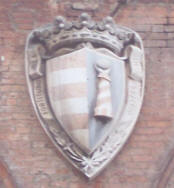Cremona
Cremona is a city and comune in Lombardy, Italy. It is the capital of the Province of Cremona. Cremona is situated on the left bank of the Po River in the middle of the Pianura Padana (Po Valley). The city is renowned for its musical history and traditions, particularly for the manufacture of high-quality violins.
History[edit | edit source]
Cremona was founded by the Romans in 218 BC as a military outpost. It became a thriving city during the Roman Empire, known for its strategic location and agricultural productivity. The city was destroyed and rebuilt several times throughout history, including during the Gothic War (535–554), the Lombard invasion, and the Holy Roman Empire.
During the Middle Ages, Cremona became a significant center of commerce and trade. It was also known for its cathedral, the Cremona Cathedral, which was built in the 12th century and is a prime example of Romanesque architecture.
Music and Violin Making[edit | edit source]
Cremona is world-famous for its tradition of violin making, which dates back to the 16th century. The city is home to the Stradivari, Guarneri, and Amati families, who are considered the greatest violin makers in history. The Museo del Violino (Violin Museum) in Cremona showcases the history and craftsmanship of these legendary luthiers.
The International School of Violin Making in Cremona continues to attract students from around the world who wish to learn the art of violin making. The city also hosts the annual Cremona Musica festival, which celebrates classical music and the art of instrument making.
Main Sights[edit | edit source]
- Cremona Cathedral: A stunning example of Romanesque architecture, featuring a beautiful facade and an impressive interior.
- Torrazzo of Cremona: The bell tower of the cathedral, one of the tallest brick towers in Europe.
- Loggia dei Militi: A historic building that served as the meeting place for the city's militia.
- Museo del Violino: A museum dedicated to the history and art of violin making.
- Palazzo Comunale: The town hall, which houses important artworks and historical documents.
Economy[edit | edit source]
Cremona's economy is diverse, with significant contributions from agriculture, industry, and tourism. The city is known for its production of Grana Padano cheese and salami. The manufacturing sector includes machinery, textiles, and food processing.
Transportation[edit | edit source]
Cremona is well-connected by road and rail. The city has a railway station that provides connections to major cities such as Milan, Brescia, and Parma. The A21 motorway also passes near Cremona, facilitating road travel.
Education[edit | edit source]
Cremona is home to several educational institutions, including the University of Pavia's Cremona campus, which offers programs in musicology and agricultural sciences. The International School of Violin Making is also a prominent institution in the city.
Notable People[edit | edit source]
- Antonio Stradivari: Renowned violin maker.
- Giuseppe Guarneri: Famous luthier.
- Claudio Monteverdi: Composer and pioneer of opera.
See Also[edit | edit source]
References[edit | edit source]
External Links[edit | edit source]
Search WikiMD
Ad.Tired of being Overweight? Try W8MD's physician weight loss program.
Semaglutide (Ozempic / Wegovy and Tirzepatide (Mounjaro / Zepbound) available.
Advertise on WikiMD
|
WikiMD's Wellness Encyclopedia |
| Let Food Be Thy Medicine Medicine Thy Food - Hippocrates |
Translate this page: - East Asian
中文,
日本,
한국어,
South Asian
हिन्दी,
தமிழ்,
తెలుగు,
Urdu,
ಕನ್ನಡ,
Southeast Asian
Indonesian,
Vietnamese,
Thai,
မြန်မာဘာသာ,
বাংলা
European
español,
Deutsch,
français,
Greek,
português do Brasil,
polski,
română,
русский,
Nederlands,
norsk,
svenska,
suomi,
Italian
Middle Eastern & African
عربى,
Turkish,
Persian,
Hebrew,
Afrikaans,
isiZulu,
Kiswahili,
Other
Bulgarian,
Hungarian,
Czech,
Swedish,
മലയാളം,
मराठी,
ਪੰਜਾਬੀ,
ગુજરાતી,
Portuguese,
Ukrainian
Medical Disclaimer: WikiMD is not a substitute for professional medical advice. The information on WikiMD is provided as an information resource only, may be incorrect, outdated or misleading, and is not to be used or relied on for any diagnostic or treatment purposes. Please consult your health care provider before making any healthcare decisions or for guidance about a specific medical condition. WikiMD expressly disclaims responsibility, and shall have no liability, for any damages, loss, injury, or liability whatsoever suffered as a result of your reliance on the information contained in this site. By visiting this site you agree to the foregoing terms and conditions, which may from time to time be changed or supplemented by WikiMD. If you do not agree to the foregoing terms and conditions, you should not enter or use this site. See full disclaimer.
Credits:Most images are courtesy of Wikimedia commons, and templates, categories Wikipedia, licensed under CC BY SA or similar.
Contributors: Prab R. Tumpati, MD





